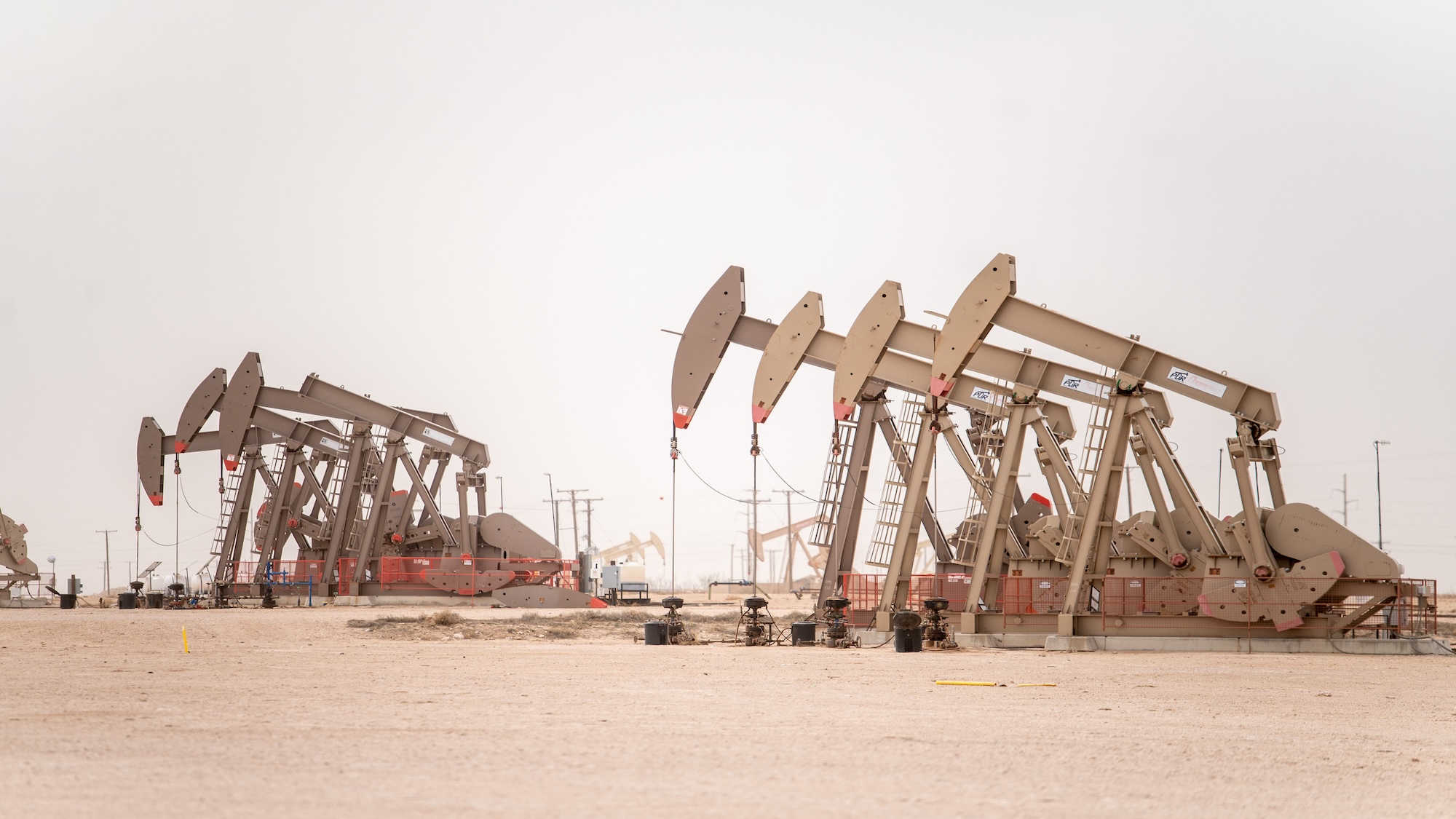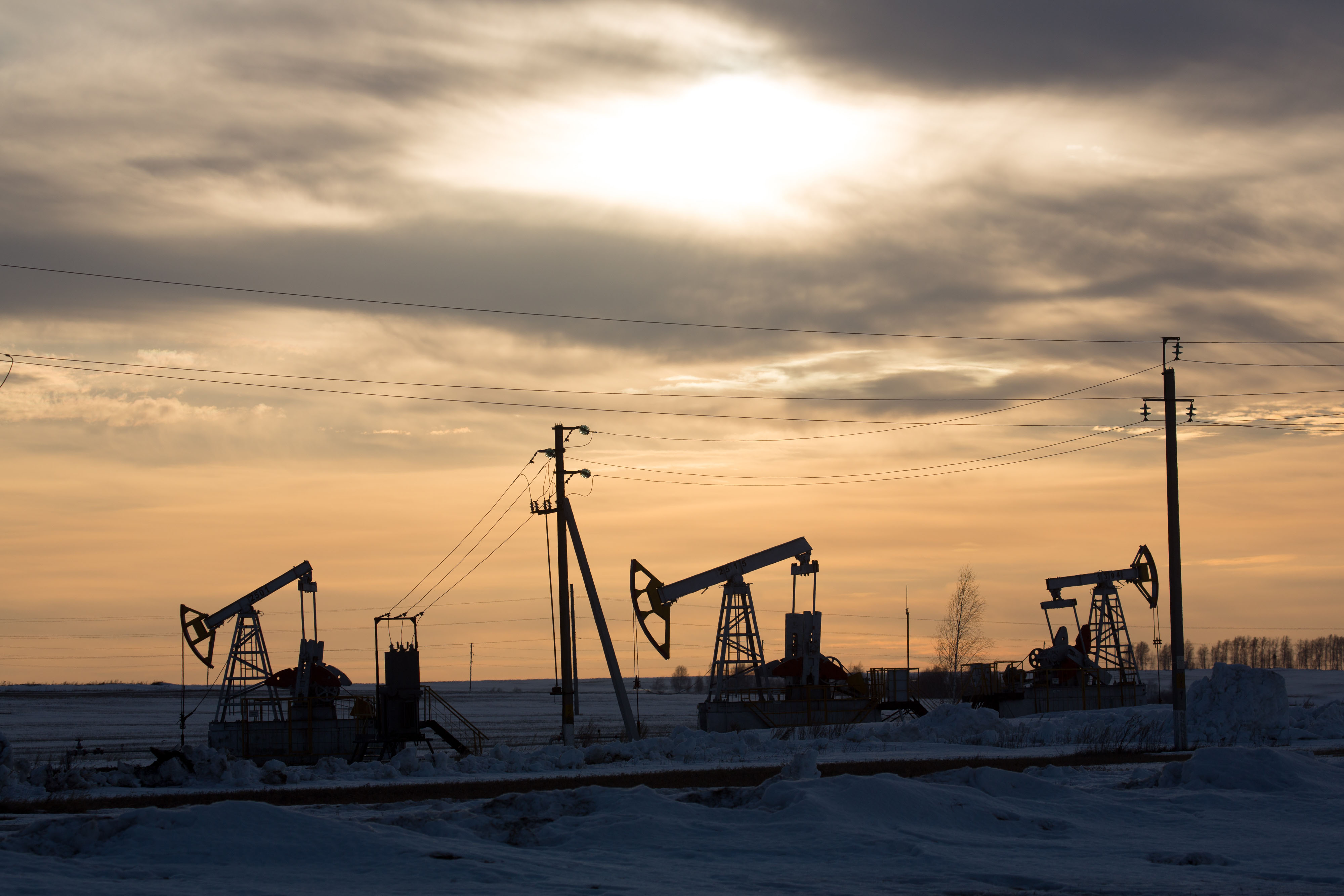Oil price posts two-year highs - but how long can it last?
Brent rose above $59 a barrel this week, its best third-quarter showing since 2004

Oil price recovery predicted - but still 'one for the brave'
25 January
Friday's oil price rally recommenced overnight in Asia, buoying hopes of a more sustained recovery.
International benchmark Brent crude had risen strongly to above $30 a barrel at the end of last week, amid a broader-based market rally prompted by hopes of European Central Bank stimulus. The worsening cold weather in the US, which saw violent blizzards across the east coast, added to the upward momentum, fuelling the sense that demand for heating oil would increase and pushing the price towards $33.
The Week
Escape your echo chamber. Get the facts behind the news, plus analysis from multiple perspectives.

Sign up for The Week's Free Newsletters
From our morning news briefing to a weekly Good News Newsletter, get the best of The Week delivered directly to your inbox.
From our morning news briefing to a weekly Good News Newsletter, get the best of The Week delivered directly to your inbox.
But the rally has already begun to fade and the underlying bearish sentiment is seeping back into the market. Oil has dipped back to a little above $31 this morning and trading is expected to be volatile as traders continue to focus on stubborn oversupply.
There is a view beginning to emerge from a number of analysts, however, that the concern over supply is being overplayed and that the fundamentals of the market should support a more sustained rise in prices. The return of Iran to the global export market and the slowdown in China should have been priced in, they argue, while production numbers can only fall sharply after billions of pounds of investment has been withdrawn.
A note published by Barclays analysts this morning noted the "world is drowning in oil" narrative in a recent International Energy Agency report, but added there is a "strong chance the IEA’s use of the term is in itself a signal that the worst for oil may now in fact be over".
Writing on Oilprice.com David Yager, the national leader of oilfield services for Calgary-based consultancy MNP, cites the investment slump and gradual demand rises as he argues a rally that could outpace even bullish expectations may be due. "Oil is selling at a fraction of replacement cost while supplies dwindle and demand grows. Something’s gotta give," he says.
A free daily email with the biggest news stories of the day – and the best features from TheWeek.com
However, supply remains an amount in the millions of barrels above demand and while producer nations refuse to get around a table, brittle sentiment will persist and rallies could continually be undermined. As FastFT notes, betting on the recovery is still "one for the brave".
Oil price: how long can 'irrational' $30 price last?
22 January
Oil prices of below $30 a barrel re "irrational" and cannot last through this year, the chairman of Saudi Arabia's state oil company Aramco has claimed.
Khalid al-Falih told delegates at the World Economic Forum in Davos that "while current prices could be explained by excess capacity, they would not last as many smaller producers [face] financial difficulties", according to the Financial Times. "The market has overshot on the low side and it is inevitable that it will start turning up," he added.
Oil has certainly been tumbling recently. International benchmark Brent crude has twice this week set a new near 13-year low of below $28 a barrel, as fears over persistent oversupply reached fever pitch following the news that Iran will return to export markets this month. A slowdown in China that could hit demand is also exacerbating bearish sentiment.
But oil prices rallied strongly overnight in Asia and this morning in London, benefitting from a big move back into risk assets by investors in the wake of hints from the European Central Bank that it could soon unleash further monetary stimulus. Brent at one point touched above $31 a barrel and was sitting only marginally below this level this morning.
The Wall Street Journal cautions, however, that the recovery is not expected to hold. Data published yesterday by the US energy watchdog show domestic stockpiles - already at record levels -rose again by four million barrels last week, while US output remains stubbornly resilient at 9.2 million barrels a day. Oversupply remains the defining issue in the market.
In that context, Al-Falih's comments are being seen as a negative as he confirmed that Saudi Arabia, the world's largest producer, will not drop exports to help support higher prices. "If prices stay low we will be able to withstand [it] for a long time," he explained.
Many traders may agree that even despite the continuing oversupply, a price of $30 a barrel or lower – perhaps $10 eventually, according to some forecasts – is too low and below the cost of extracting oil in many areas of the world. But the market is driven by sentiment and that is unlikely to see a sustained shift until there are significant concessions on supply.
Oil price: fall to $10 a barrel is 'not impossible'
21 January
Independent analysts predicting the oil price could fall to painful lows is one thing, but when an oil major admits an ultra-bearish forecast is likely, people sit up and take notice.
That is what happened on the fringes of the World Economic Forum in Davos yesterday, where the boss of BP, Bob Dudley, told the BBC's Kamal Ahmed it was "not impossible" the price of oil could fall to $10 a barrel - a forecast made earlier this month by emerging-markets lender Standard Chartered.
However, Dudley reckons this will be a short-term fall to a price that is not sustainable. "We could see some real volatility in the first quarter [and] second quarter," he said. "And then, around April or May, as the stock drawdowns [in preparation] for the summer driving season in the northern hemisphere, then I think that given the rise of demand in China and North America… prices would start on an upward trajectory".
In fact, he has predicted "a price $30 to $40 by the middle of the year" and eventually "towards the end of the year, it could be into the $50s".
Certainly the first part of Dudley's prediction looks more likely all the time. After latest data from the American Petroleum Institute showed another huge build in reserves of 4.6 million barrels last week, US benchmark West Texas Intermediate hit its lowest level since May 2003, of below $27 a barrel. Brent crude also fell to a new near 13-year low of $27.20 at one point overnight.
There is little to calm investors over the ongoing supply glut: newly liberated Iran and the US are contributing to what John Kilduff, a partner at Again Capital, described to CNBC as a "battle royale" for market share in Europe; US supplies remain resilient, and even fresh calls from Opec member Venezuela for an emergency meeting to address the slump were roundly rebuffed.
Christopher McKnett, head of ESG Investing at the Boston-based State Street Global Advisors, said the current cycle should be a warning to investors ahead of an international clampdown on carbon-intensive industries in the wake of an agreement to tackle climate change. Instead of trying "to time an oil bounce" and getting "burned every time", he said investors should back nascent renewable energies.
Oil price: rally proves to be another false dawn
20 January
The price of oil is on the verge of ploughing a near 13-year trough as it resumes its bearish trend following a brief relief rally on Tuesday.
International benchmark Brent crude had recovered initially yesterday and at one point touched around $30 a barrel. But as the afternoon wore on, the rally ran out of steam. The ultra-negative sentiment that has dominated the market took hold again overnight in Asia and pushed the price to a little above $28.
Losses were extended in early trading in London this morning, putting Brent back below $28 and just 40 cents above the intraday nadir on Monday that marked the lowest level since 2003.
The increases had been a typical "sell the rumour, buy the fact" bounce as the United Nations' energy agency cleared the path for Iran to re-enter international markets and ramp up oil exports. But in a market that is massively overstocked and in which demand continues to fall short of excessive supply, once the dust settled, this came to be seen as another negative signal.
The International Energy Agency yesterday cited Iran's return to markets in its warning that the world could "drown in oversupply". There is also the fear that the country could boost supplies much faster than people expect, says the Wall Street Journal, amid reports that as many as 50 million barrels are already ready to be shipped.
And Barclays warned yesterday that even if "geopolitical risks and delays in Iran’s return, combined with current market positioning… lead to a rapid rebound in prices in the coming months", it does "not believe [the rally] would be fundamentally supported", notes the Financial Times. A more fundamental shift in the demand and supply dynamic will be needed to turn around the trend.
Some analysts reckon this could soon happen as current prices, which are lossmaking for production in most regions and painful for major oil-producing nations' budgets, will prompt action. Jonathan Barratt, the chief investment financial officer at Sydney's Ayers Alliance, told Reuters: "Looking at current prices, oil producers will engineer something to push prices higher."
Oil price: 'enormous strain' to remain throughout 2016
19 January
The slump in the oil price that has lasted 18 months is now the worst in post-war history, says the Daily Telegraph.
After an initial dive to well below $28 a barrel on Monday, international benchmark Brent crude rose through the afternoon and settled overnight at close to $30. This bore out predictions that removing the uncertainty over the lifting of economic sanctions on Iran would spark a modest rally.
But the prevailing advice of most observers, articulated last week by Tyche Capital Advisors in New York, is to sell "any and all rallies" as a global glut continues to dominate sentiment. Traders appear to be taking that on board: in early trading in London, the price of Brent had slipped towards $29 a barrel and was heading lower.
The imminent removal of international sanctions on Iran is about to see a new flood of oil into an already oversupplied market. The Financial Times notes the head of the country's national oil company has already ordered an increase in output of 500,000 barrels a day and that 50 million barrels that had been held in reserve were already on tankers ready to be shipped to buyers in Europe.
This ramping up of output from a country with the fourth-largest proven oil reserves in the world is one reason cited by the International Energy Agency in its latest incredibly bearish forecast for prices this year. It said this would more than counter the fall in US production and keep supply 1.5 million barrels ahead of demand throughout 2016.
In short, it predicted that the world "could drown in oversupply" and that "enormous strain" on prices would be maintained, says FastFT. Predictions are for oil to fall to between $25 and $10 a barrel this year, before recovering.
-
 Political cartoons for January 4
Political cartoons for January 4Cartoons Sunday's political cartoons include a resolution to learn a new language, and new names in Hades and on battleships
-
 The ultimate films of 2025 by genre
The ultimate films of 2025 by genreThe Week Recommends From comedies to thrillers, documentaries to animations, 2025 featured some unforgettable film moments
-
 Political cartoons for January 3
Political cartoons for January 3Cartoons Saturday's political cartoons include citizen journalists, self-reflective AI, and Donald Trump's transparency
-
 How might the Israel-Hamas war affect the global economy?
How might the Israel-Hamas war affect the global economy?Today's Big Question Regional escalation could send oil prices and inflation sky-high, sparking a worldwide recession
-
 Recent mega-mergers could signal a turning point for the US oil industry
Recent mega-mergers could signal a turning point for the US oil industryTalking Point Both Chevron and Exxon have recently spent billions to acquire smaller oil companies
-
 Has Saudi Arabia lost control of oil prices?
Has Saudi Arabia lost control of oil prices?Today's Big Question Kingdom goes it alone to cut production, risking tension with US and reigniting cooling inflation in Europe
-
 US angered by Opec+ oil cut
US angered by Opec+ oil cutSpeed Read Energy prices to rise further as producers slash supply by two million barrels a day
-
 Global oil demand forecast lowered for 2020 and 2021
Global oil demand forecast lowered for 2020 and 2021Speed Read IEA report says jet fuel demand remains the major source of weakness
-
 Are US-Iran tensions flaring again?
Are US-Iran tensions flaring again?In Depth Trump threatens military action over Twitter
-
 Can a deal be struck to raise oil prices?
Can a deal be struck to raise oil prices?In Depth Opec+ will convene today over video link in a bid to boost crude
-
 What do negative oil prices mean?
What do negative oil prices mean?In Depth Perfect storm of oversupply and storage shortages sees producers paying to get rid of US crude